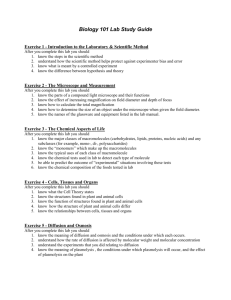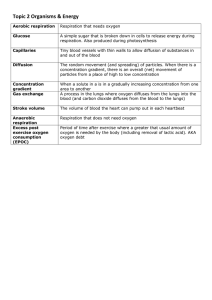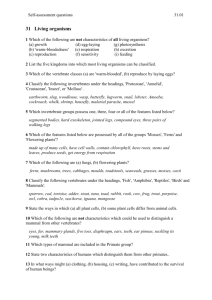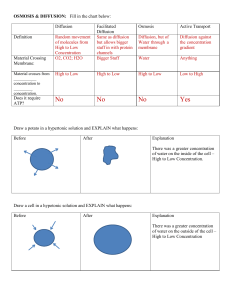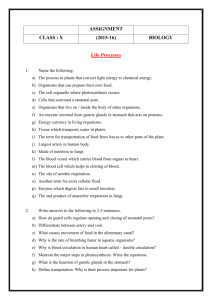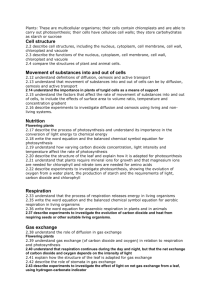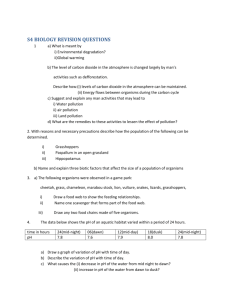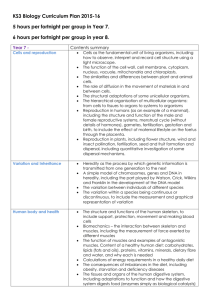The transfer of substances containing carbon between
advertisement
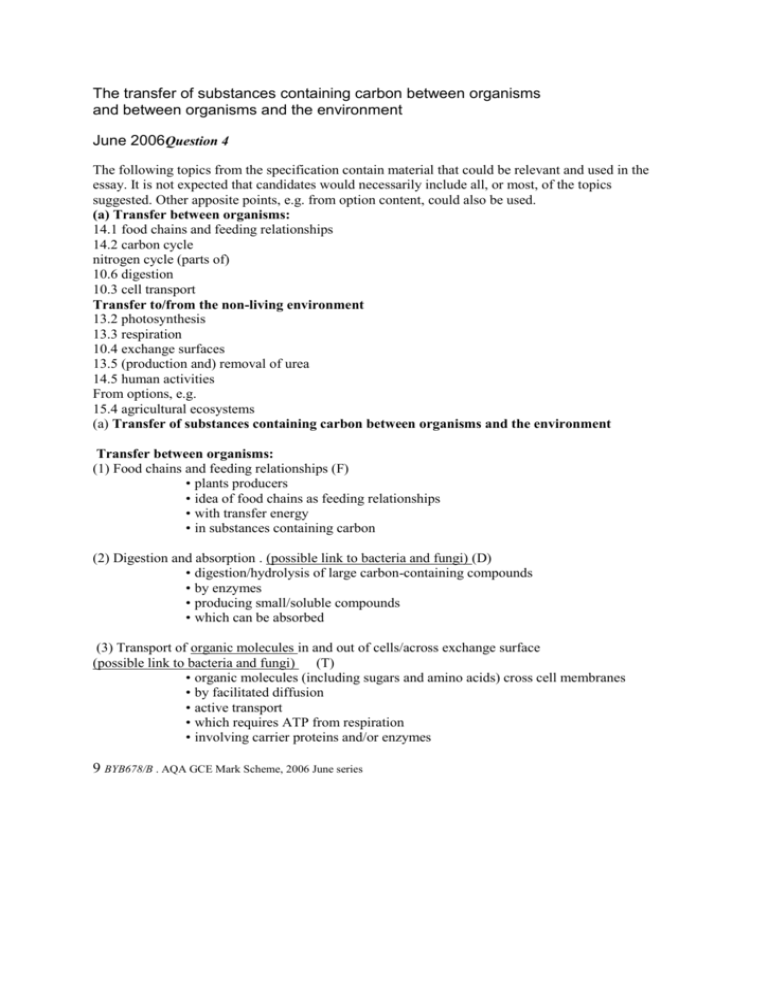
The transfer of substances containing carbon between organisms and between organisms and the environment June 2006Question 4 The following topics from the specification contain material that could be relevant and used in the essay. It is not expected that candidates would necessarily include all, or most, of the topics suggested. Other apposite points, e.g. from option content, could also be used. (a) Transfer between organisms: 14.1 food chains and feeding relationships 14.2 carbon cycle nitrogen cycle (parts of) 10.6 digestion 10.3 cell transport Transfer to/from the non-living environment 13.2 photosynthesis 13.3 respiration 10.4 exchange surfaces 13.5 (production and) removal of urea 14.5 human activities From options, e.g. 15.4 agricultural ecosystems (a) Transfer of substances containing carbon between organisms and the environment Transfer between organisms: (1) Food chains and feeding relationships (F) • plants producers • idea of food chains as feeding relationships • with transfer energy • in substances containing carbon (2) Digestion and absorption . (possible link to bacteria and fungi) (D) • digestion/hydrolysis of large carbon-containing compounds • by enzymes • producing small/soluble compounds • which can be absorbed (3) Transport of organic molecules in and out of cells/across exchange surface (possible link to bacteria and fungi) (T) • organic molecules (including sugars and amino acids) cross cell membranes • by facilitated diffusion • active transport • which requires ATP from respiration • involving carrier proteins and/or enzymes 9 BYB678/B . AQA GCE Mark Scheme, 2006 June series Transfer to/from the non-living environment (4) Carbon cycle (and relevant parts of nitrogen cycle) (C) • carbon enters biotic by photosynthesis • leaves biotic by respiration/combustion • role of bacteria/fungi as decomposers • of dead organisms/ faeces/ excretory products/urea (5) Photosynthesis (P) • light-independent reaction • carbon dioxide reacts with ribulose bisphosphate • glycerate 3-P reduced to sugar • reduced NADP and ATP from light-dependent reaction • Calvin cycle (6) Respiration (R) • link reaction/Krebs cycle • oxidation of intermediates • generation of reduced coenzymes • loss of carbon dioxide (7) Exchange surfaces - for carbon dioxide for animals (EA) and plants (EP) • large surface area - alveoli - mesophyll cells • short diffusion pathways - epithelium and endothelium - thin leaves and many stomata • maintaining diffusion gradient - capillary and respiration - photosynthesis and • respiration in mesophyll cells (time of day) • ventilation - breathing - via air spaces in leaf Breadth of Knowledge 3 marks four topics - at least one from each set of examples 2 marks four from one set of topics three topics - at least one from each set 1 mark two topics




